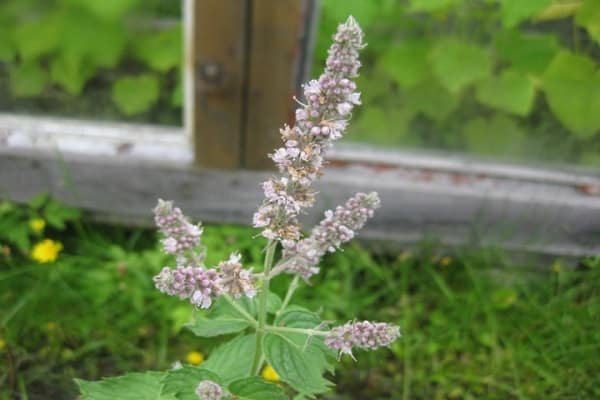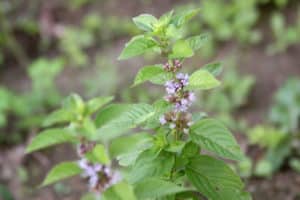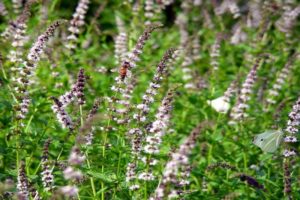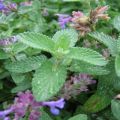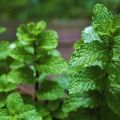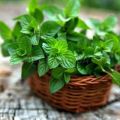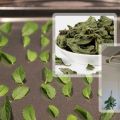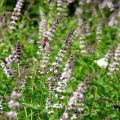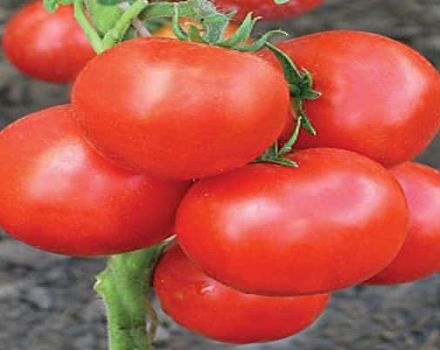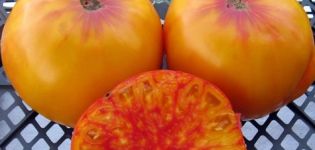How to properly propagate mint by seeds and root layers
Garden mint is familiar to everyone, regardless of whether you have your own garden. This plant is used for medicinal purposes, as a seasoning for various dishes, as a base for soft drinks and cocktails, as a perfume and cosmetic component. The culture is subdivided into varieties that differ in taste and aroma. Peppermint is the most popular and ubiquitous. She feels great outdoors, under a film cover and on a windowsill. You just need to know how to propagate mint and care for it.
Peppermint propagation features
There are several ways to propagate mint with certain pros and cons:
- sowing seeds;
- grafting;
- division of the mother bush.
It is most difficult to grow peppermint from seeds, so gardeners tend to tend to cuttings or dividing the bush.
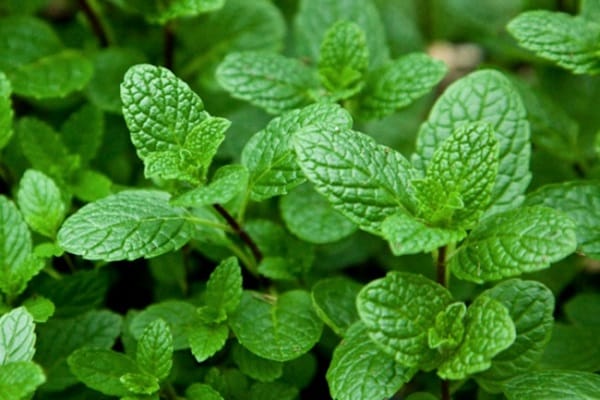
Difficulties in seed reproduction are poor germination.
Seed propagation
For sowing peppermint, choose a warm place open to the sun's rays. During dry periods, plants need shading. When growing at home, pots or boxes should be placed on windows facing southwest or east to provide at least four hours of light.

Seed propagation is recommended for experienced gardeners or those who are not afraid of difficulties. Planting is done in this way: the container is filled with soil, which must be slightly moistened. The seeds deepen by half a centimeter. The containers are covered with glass or polyethylene and placed in a room with a temperature of +24 degrees. Planting needs to be ventilated and moistened.
Seedlings appear in one to two weeks. Fortified plants are transplanted one at a time and sent for adaptation to a cooler place if further cultivation is envisaged. Landing in open ground is possible in 7-10 days. Due to the active growth of the root system, the seedlings are located at a distance from each other. Mint grown from seeds has a slower development when compared with methods of vegetative propagation.
On the positive side, the leaves and stems are soft and tender for a long time.
Root layers
The long roots of the mint are strewn with dormant buds, from which new shoots and bushes emerge. This feature of the plant makes it possible to reproduce with the help of root layers, which are stored in late summer - early autumn. A few cuttings 10 cm long are enough.Root shoots are placed in moist soil to a depth of 5 cm.
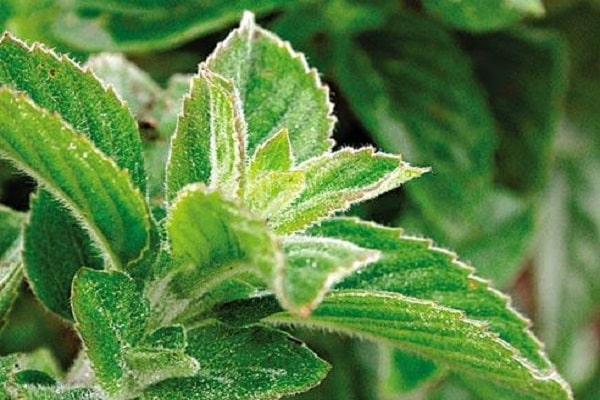
Rooting cuttings and leaves
Reproduction of peppermint by cuttings will not cause problems for a novice gardener. This method is simple to implement. In addition, further cultivation and care will require a minimum of attention. Optimal dates for disembarkation: late April - early May. A ten-centimeter piece of stem with an ovary of leaves is cut from the bush. The branch is placed in clean water for a week. During this time, she will give roots, which should be constantly in the water. When the roots reach 2-3 cm, you can transplant plants into ridges or pots at home.
Despite the resistance of mint to adverse weather conditions, it is preferable to wait until the end of spring frosts.
Sprouted branches are planted in the ground with a depth of 5 cm and an interval of 15 cm, which is necessary for the bushes for normal development. Landing in a place open to the sun in the morning and afternoon is desirable. In advance, you need to prepare the soil by removing weeds and rhizomes while loosening. High ridges are arranged in damp places; in dry places, a deepening is necessary.
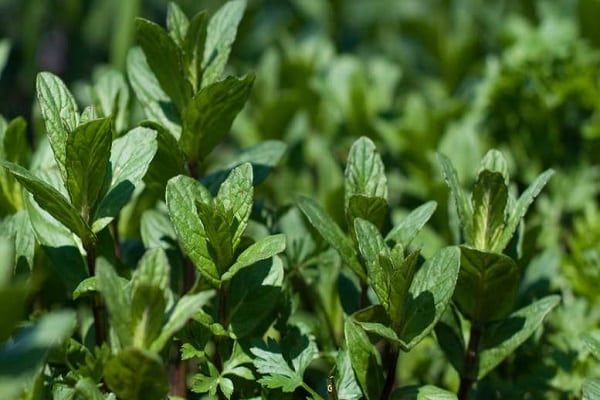
Division of the mother bush
The easiest way to reproduce is to divide the dug out mint bush into parts and plant it in the soil. An important condition is the presence of buds or shoots on each plot. In the daughter plant, the aerial part is cut off, which stimulates the rooting process. Planting is carried out in holes 10 cm deep at a distance of 30 cm. It is recommended to apply humus to each hole before planting. After a couple of weeks, the plantings are covered with young foliage, this indicates the normal development of the bush, which will need urea feeding (1-2 g per liter of water).
Do not forget about the aggressiveness of the culture, which can grow over large areas, displacing other plants and shrubs. To avoid this, they arrange a limiter: they dig in iron plates or pieces of slate to the depth of the location of the rhizomes along the perimeter of the plantings. An effective way is to plant mint in a bulky container: an old bucket, a basin, a bath, which are buried in the ground. This option will protect neighboring crops.
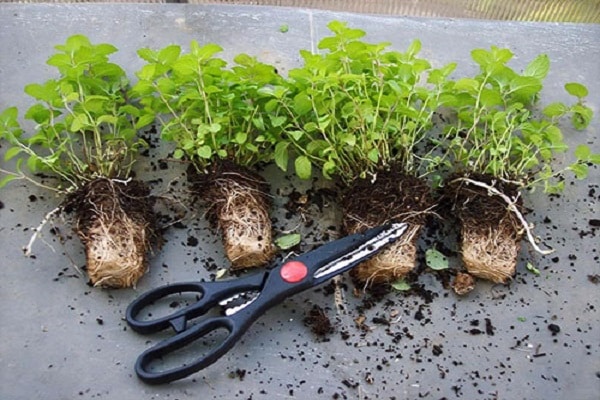
Growing features:
- It is preferable to plant mint in the place of legumes and roots. Ridges after harvesting melon and buckwheat are suitable, which enrich the soil with calcium, which is necessary for the successful development and growth of peppermint.
- Avoid planting near crops that require treatment with pesticides that make mint unsuitable for consumption.
- The culture prefers light fertile soils, loamy and sandy loam.
- Wetlands are destructive for these plants. Drying out of the soil can be avoided by mulching.
- Regular feeding with organic, phosphorus and nitrogen fertilizers is encouraged.
- Loosening is carried out twice a year.

Mint will respond to your care with a luxurious appearance and an inimitable aroma. Harvesting is carried out from the first year of planting to the beginning of flowering. Dry the leaves in a shaded, ventilated place. Dry products are wiped or stacked entirely in paper bags or glass jars with lids. In order to stock up on a fragrant and useful culture for the future, it is not necessary to have the appropriate experience, a lot of time and money.
